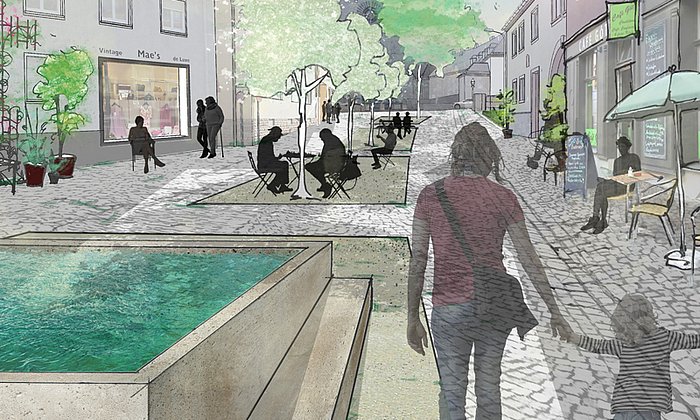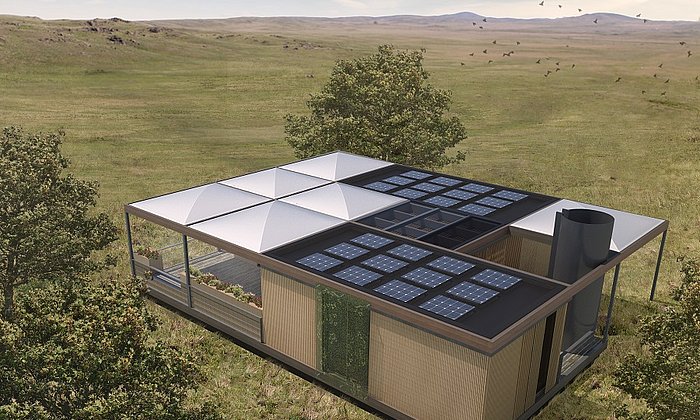Guidelines for climate-adapted Bavarian cities published
Urban planning: Green spaces for a better climate

Current climate prognoses are forecasting that mean annual temperatures in Bavaria will markedly rise. Extreme weather events such as heat waves and heavy rainstorms are on the increase. Cities are particularly impacted by the effects of climate change. Because of their higher degree of sealed surfaces and denser development, which combine to trap heat and prevent cooling, cities experience more heat waves compared to more rural areas. Extended heat waves can put the health of people and animals at risk. The high degree of sealed surfaces also means that high levels of rainfall cannot filter downwards – this leads to flooding and property damage.
Towns and cities need more green
How can city planning help to resolve these issues? Working together with Bavarian communities and local councils, researchers at TUM's Centre for Urban Ecology and Climate Adaptation (ZSK), which is funded by the Bavarian State Ministry for the Environment and Consumer Protection, drew up “Guidelines for climate-oriented municipalities in Bavaria”.
The guide for planners makes one thing clear: cities need more green spaces. Trees and parks help to cool and purify the air as well as reduce noise pollution. Green spaces also absorb excess rain water and thus are a valuable buffer against flooding.
Next to climate adaptation, the authors point out that climate protection is equally as important. That’s why the guidelines also include recommendations for building renovation measures.
Specific measures depending on urban structure
In their analysis, the scientists focused on three particular types of urban development structure typical for Bavaria: the central Munich district Maxvorstadt as an example of late-nineteenth-century inner-city block development, the Munich suburb Neuaubing as a typical early-twentieth-century row development, and Heidingsfeld in Würzburg as an example of a historic town centre.
A detailed analysis of these three types helped the research team to formulate a series of recommendations for the most effective landscaping and planting measures for each, taking into account the differing requirements and possibilities of each urban structural type.
One conclusion is that trees have the greatest impact on urban microclimates, whereby the guidelines specify that tree-planting schemes need to pay particular attention to the more climate-resilient varieties and ensure plenty of room for root development. Green or so-called living roofs and facades are also efficient methods of providing cooling due to evapo-transpiration and the shading they provide.
Solutions even for high-density areas
The results of the Centre’s research are encouraging: even in Bavaria’s most densely built-up areas, there are ways of facing the challenges posed by climate change. However, appropriate measures should be implemented as quickly as possible, recommend the authors.
Publication:
Werner Lang, Stephan Pauleit: Leitfaden für klimaorientierte Kommunen in Bayern (PDF, 46,9 MB).
More information:
Contact:
Technical University of Munich
Centre for Urban Ecology and Climate Adaptation
Subproject 1: Mitigation and Urban Green Infrastructure
Chair for Energy Efficient and Sustainable Design and Building
Prof. Dr.-Ing. Werner Lang
tel.: +49 (89) 289 23988
email: w.lang@tum.de
Chair for Strategic Landscape Planning and Management
Prof. Dr. Stephan Pauleit
tel.: +49 (8161) 71 4780
email: pauleit@tum.de
Technical University of Munich
Corporate Communications Center
- Corporate Communications Center
- presse@tum.de
- presse@tum.de
- Teamwebsite



